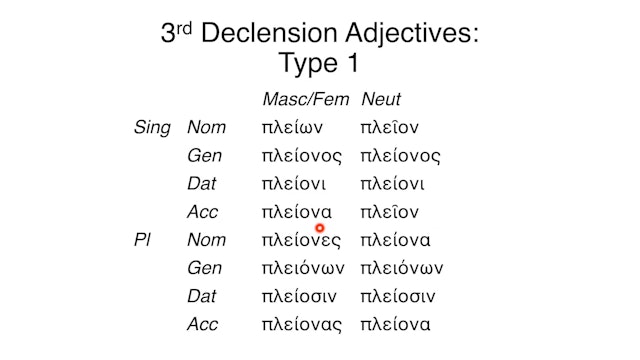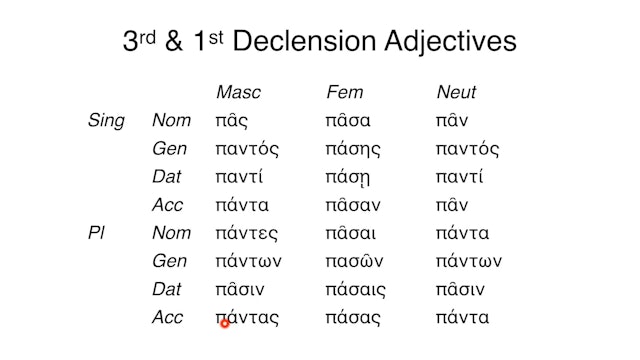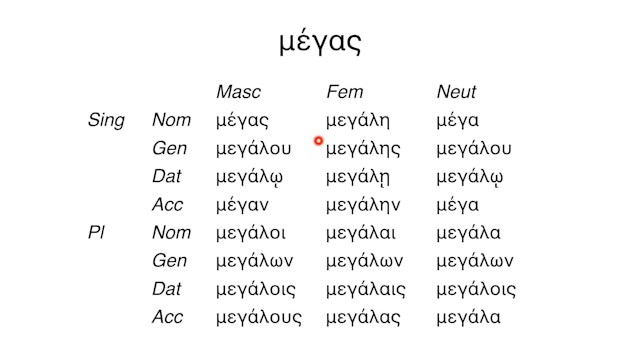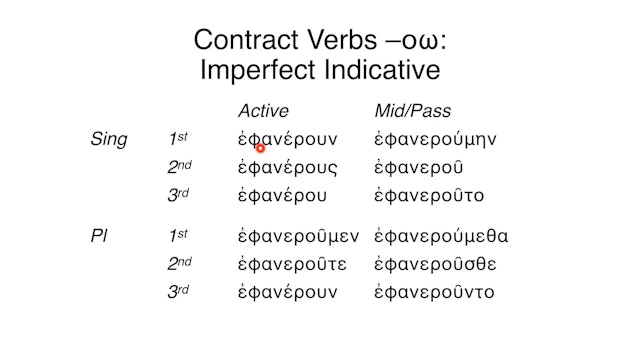Reading Biblical Greek (Constantine R. Campbell)
Based on Reading Biblical Greek written by Richard J. Gibson and Constantine R. Campbell, this series is designed around three core elements: grammar, vocabulary, and reading and translation. It introduces you to the essential information you need to optimize your grasp of the fundamentals of biblical Greek—no more and no less—and help you read and translate the Greek of the New Testament as soon as possible.
The learning approach in the Reading Biblical Greek course revolves around three core elements: grammar, vocabulary, and reading and translation.
• Grammar. The grammar consists of micro-lessons, which break up information in small, digestible chunks. Each micro-lesson addresses a single point. This arrangement makes for easy comprehension and review. New learning is incremental and recursive—each new piece builds on and reinforces prior learning.
• Vocabulary. As an essential complement to grammar, vocabulary is introduced at strategic points and is arranged first by what you have been learning in grammar, and then by frequency.
• Reading and Translation. The goal of this series is to enable students to read and translate the Greek of the New Testament. Thus, the content is structured and tied to a specific Greek text to enable reading as soon as possible. The student will have read and translated the whole of Mark 1–4 by the end of the series.
While Reading Biblical Greek only introduces you to information that is essential to grasp the fundamentals of the Greek language, it is informed by the latest and best of Greek and linguistic scholarship, enabling you to move seamlessly into further study.
By watching this series, you will gain:
• familiarity with the basic rules of New Testament Greek grammar
• a basic grasp of beginning-level Greek vocabulary
• experience in applying grammar and vocabulary lessons to actual translation
-
Reading Biblical Greek - Session 66A - Uses of the Subjunctive
-
Reading Biblical Greek - Session 66B - Uses of the Subjunctive continued
-
Reading Biblical Greek - Session 67A - Conditions
-
Reading Biblical Greek - Session 67B - Conditions continued
-
Reading Biblical Greek - Session 68 - Adverbs
-
Reading Biblical Greek - Session 69A - 3rd Declension Nouns: Masculine and Feminine
-
Reading Biblical Greek - Session 69B - 3rd Declension Nouns: Masculine and Feminine continued
-
Reading Biblical Greek - Session 70 - 3rd Declension Nouns: Neuter
-
Reading Biblical Greek - Session 71 - 3rd Declension Pronouns
-
Reading Biblical Greek - Session 72 - Adjectives of 3rd and 1st Declensions
-
Reading Biblical Greek - Session 73 - πολύς and μέγας
-
Reading Biblical Greek - Session 74 - The Infinitive
-
Reading Biblical Greek - Session 75 - Uses of the Infinitive
-
Reading Biblical Greek - Session 76 - Contract Verbs αω
-
Reading Biblical Greek - Session 77 - Contract Verbs οω
-
Reading Biblical Greek - Session 78A - Pragmatics of Participles
-
Reading Biblical Greek - Session 78B - Pragmatics of Participles continued
-
Reading Biblical Greek - Session 79 - Periphrastic Participles
-
Reading Biblical Greek - Session 80A - Three Key μι Verbs (ε, ο, α): Indicative and Participle
-
Reading Biblical Greek - Session 80B - Three Key μι Verbs (ε, ο, α): Other Moods, Aorist Forms
-
Reading Biblical Greek - Session 81 - Other μι Verbs
-
Reading Biblical Greek - Session 82 - The μὲν . . . δέ Construction
-
Reading Biblical Greek - Session 83 - The Optative Mood

























